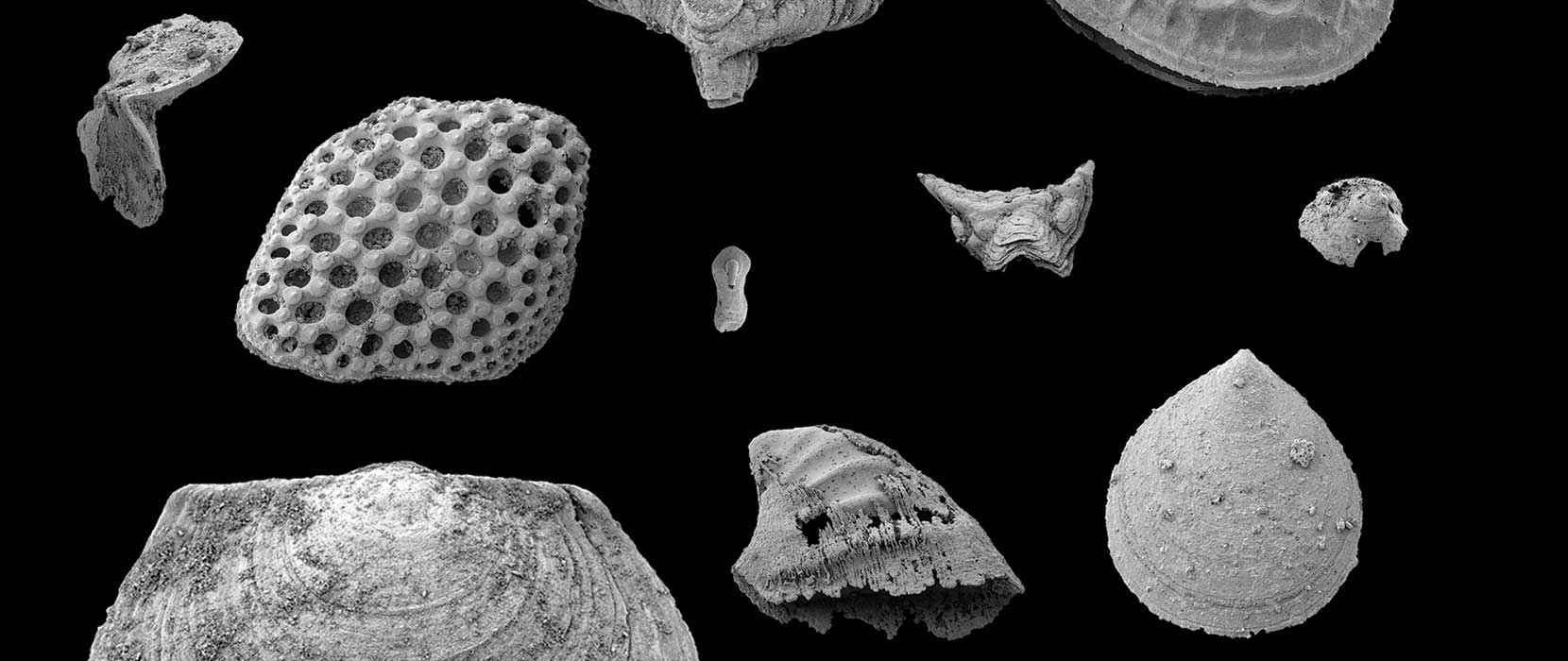SHELLY FOSSILS FROM AUSTRALIA AND CHINA
It’s hard to imagine two more different places: the Flinders Ranges in outback South Australia, and the Qinling Mountains in the southern Shaanxi Province in central China.
Dr Marissa Betts School of Environmental and Rural Science
In terms of landscape and climate they are poles apart, to say nothing of the culture and language. But they have a lot more in common than one might think. Dr Marissa Betts — one of UNE’s new crop of world-leading postdoctoral fellows — explains: ‘If we were to wind back the tape of natural history over 500 million years — a very long time ago — this part of China and South Australia were close neighbours… But over subsequent eons, the slow, inevitable chug of the tectonic conveyer-belt has driven them far apart’. It is well known that during the early Cambrian period (about 538 to 514 million years ago), South Australia was part of a larger landmass called Gondwana which was positioned in warm tropical latitudes around the equator. But what is not widely appreciated outside the academy is that, according to the fossil record, it was during this time that most of the major groups of animals appeared in the geologic equivalent of an instant.
It is well known that during the early Cambrian period (about 538 to 514 million years ago), South Australia was part of a larger landmass called Gondwana which was positioned in warm tropical latitudes around the equator. But what is not widely appreciated outside the academy is that, according to the fossil record, it was during this time that most of the major groups of animals appeared in the geologic equivalent of an instant. Often referred to as the ‘Cambrian Explosion’, this bioevent was the most significant animal diversification ever to have occurred, and completely revolutionised life on Earth. Many of the critters that appeared at this time bore the first complex biomineralised skeletons; an assortment of very small shells, spines, cones, caps, and plates, mere millimetres in size, are often found by the thousands in rocks of this age. These tiny fossils are telling us big stories, not just about how early animals evolved, but also the shape and form of ancient landmasses’.
Shelly fossil assemblages from South Australia and South China, a discrete tectonic chunk of China that floated around the globe for eons, have been known for some time to bear close similarities. But new data from North China (present day north-east China) is telling a different story. Dr Betts’ colleagues from the Nanjing Institute of Geology and Paleontology, Chinese Academy of Sciences, and at Macquarie University, have revealed shelly fossil species from North China that were previously known only from lower Cambrian rocks in South Australia.Now, UNE collaborations with Northwest University in Xi’an, Shaanxi Province,
Now, UNE collaborations with Northwest University in Xi’an, Shaanxi Province, aim to target shelly fossils, in addition to a suite of exceptionally-preserved, but extremely delicate microfossils from both Australia and China, to help revise our understanding of the relationship between the two ancient landmasses and their fauna. For Dr. Betts and her colleagues, working in the early Cambrian period is exciting because they are dealing with nascent ecosystems composed of organisms at the very roots of their evolutionary trees. ‘These fossils are incredibly important because they are helping us answer big questions about what the Earth was like deep in the past, at a pivotal point in animal evolution’. Each piece of the early Cambrian puzzle is critical, and it seems like pieces from South Australia and China are fitting together very nicely indeed.


